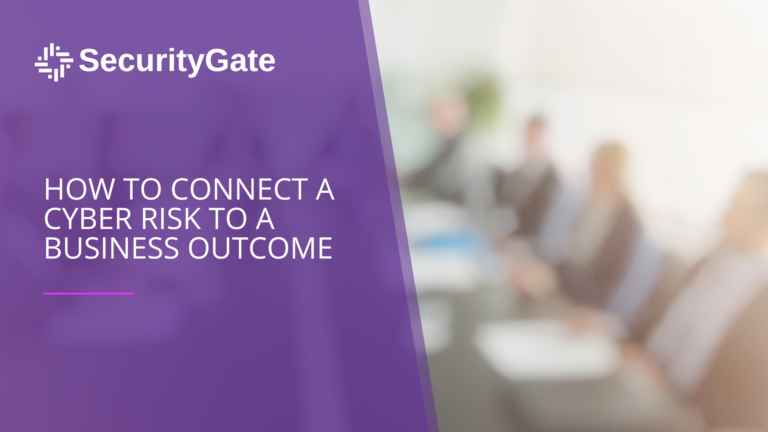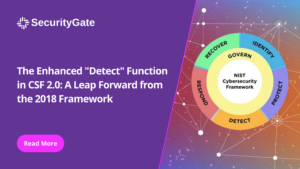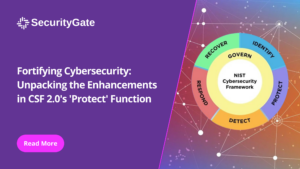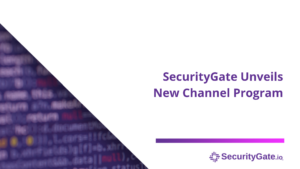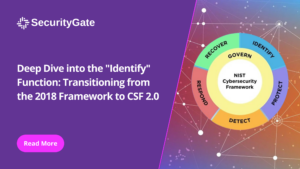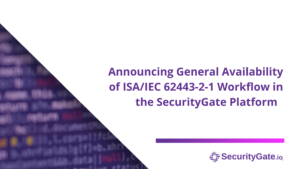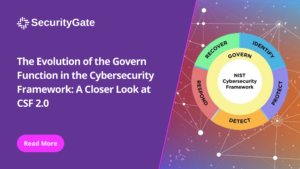In today’s hyper-connected business landscape, continual cybersecurity improvement is a technical necessity and a cornerstone of sound strategic business operations. Yet, the journey from evaluating and recognizing cyber risks to effectively aligning them with business outcomes is fraught with challenges, particularly for Chief Information Security Officers (CISOs) striving to secure budgetary support for their cyber roadmap. In this article, I will provide an understanding of these challenges and offer some practical advice for overcoming them.
The CISO’s Plight
Imagine a CISO who is well aware of the potential devastation that unchecked cyber risks can pose to his organization. Despite his clear vision and the critical nature of the cybersecurity initiatives he proposes, he finds himself at a standstill, facing a trio of formidable challenges:
- The Nodding Syndrome: He presents his well-thought-out cyber projects to the leadership team and receives understanding nods in return but no tangible approval or commitment to move forward. This pattern of passive acknowledgment without action leaves critical cyber control improvement plans unaddressed.
- Cybersecurity: The Backburner Issue: In strategic discussions and planning sessions, cybersecurity is invariably pushed to the end of the agenda, if it’s discussed at all. This relegation to an afterthought undermines the urgency and importance of cyber initiatives.
- Peer Support: A Missing Link: The lack of recognition from peers further isolates the CISO. Without their support, cybersecurity fails to gain traction as a priority across the leadership team, making it challenging to champion significant cyber initiatives.
Bridging the Gap
The solution to these challenges lies in a strategic approach that involves partnering with a team or vendor deeply versed in the specific nuances of the CISO’s sector and operational environment. Here is how such a partnership can transform the cybersecurity landscape for the better:
- Deep Industry Understanding: A partner with a deep understanding of the CISO’s specific space and typical operational environment is crucial. This depth of knowledge allows for the translation of cyber risks into business impacts that resonate with the CISO’s leadership team. For instance, in a manufacturing context, articulating how a cyber incident at critical and non-critical sites leads to varied production downtime risks makes the need for cybersecurity investment more of an operational discussion rather than a technical request.
- Proven Track Record: Choosing a partner with a list of previous clients in the same sector is invaluable. This experience demonstrates that the solutions offered are not only viable but have been tested and refined in the fires of real-world challenges faced by peers. It’s a testament to the partner’s ability to deliver results with a keen eye for industry-specific, niche markets, providing a layer of credibility and reassurance to both the CISO and the leadership team.
- Industry-Specific Solutions: The partner’s offerings must include workflows, modules, language, and features tailored to the specific sector. For example, the vast majority of IT standards and frameworks apply to front-end, user-oriented cyber challenges driven by corporate architecture, networking, and privacy-mitigation requirements. On the other hand, critical sectors have robust back-end technologies that are operational in nature, requiring a different subset of cyber controls. For cyber programs to be successful in these environments, unique language, reporting structure, maintenance cycles, and personnel training all must be coordinated effectively. Often, the success of a cyber program in heavy, operational environments is driven by the ease of use of the chosen solutions and the industry-specific training that accompanies rollout.
Practical Steps Forward to Gain Traction Today in your Cyber Program
To navigate these challenges and secure the necessary support, a CISO should take several proactive steps:
- Translate Cyber Risks into Business Language: Start by framing cyber controls in a way that points to potential impacts on key business outcomes. This involves moving beyond technical jargon to articulate how cyber risks affect operational efficiency, safety, and facility downtime.
- Leverage Data and Case Studies: Use data, benchmarks, and case studies from similar organizations within the sector to underline the tangible benefits of investing in cybersecurity. Highlighting how competitors or peers have mitigated risks or suffered from inaction can be a powerful motivator.
- Build Cross-Functional Alliances: Garnering support from peers requires demonstrating the cross-functional implications of cyber risks. By working closely with leaders from operations, supply chain, and physical security, a CISO can illustrate the universal benefits of a robust cyber defense strategy.
- Showcase Quick Wins: Implementing smaller, cost-effective cybersecurity initiatives that deliver immediate benefits can help build credibility and demonstrate the value of a more comprehensive cyber roadmap. These quick wins can serve as a foundation for broader strategic discussions and investments.
- Educate and Engage: Continuous education and engagement with the leadership team about the evolving cyber threat landscape and its implications for the business are essential. Regular, digestible updates that connect cyber incidents in the news to potential risks for the organization can keep cybersecurity top of mind for decision-makers.
Conclusion
For a CISO struggling to secure budgetary support for critical cyber initiatives, the path forward involves a strategic blend of sector-specific expertise, proven solutions, and a deep understanding of how to translate cyber risks into business terms. By leveraging a partner that embodies these qualities and adopting a proactive, business-oriented approach to cybersecurity, CISOs can not only secure the necessary support from their leadership teams but also ensure that cybersecurity is recognized as an integral component of the organization’s overall strategy for success.
For more related topics, follow me on LinkedIn and tune in to the Business of Cyber Series, which is live on LinkedIn every Tuesday at 10:00 a.m. CST.
